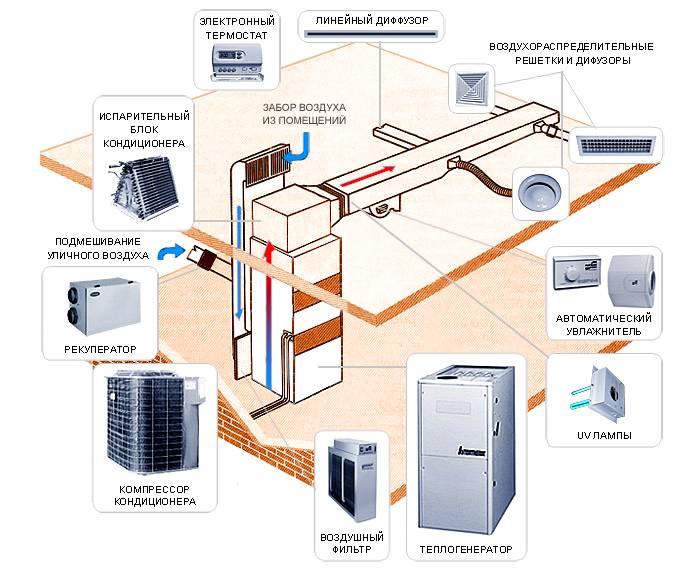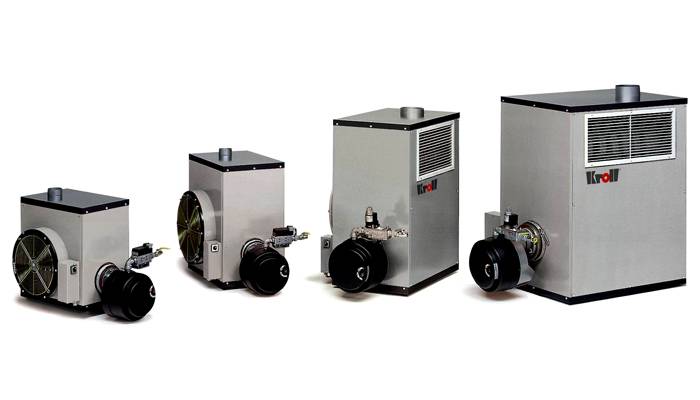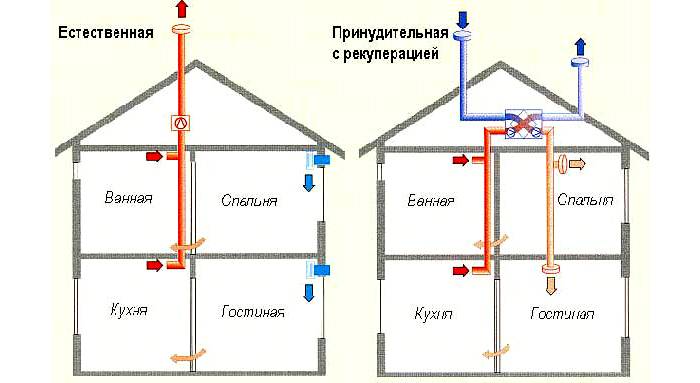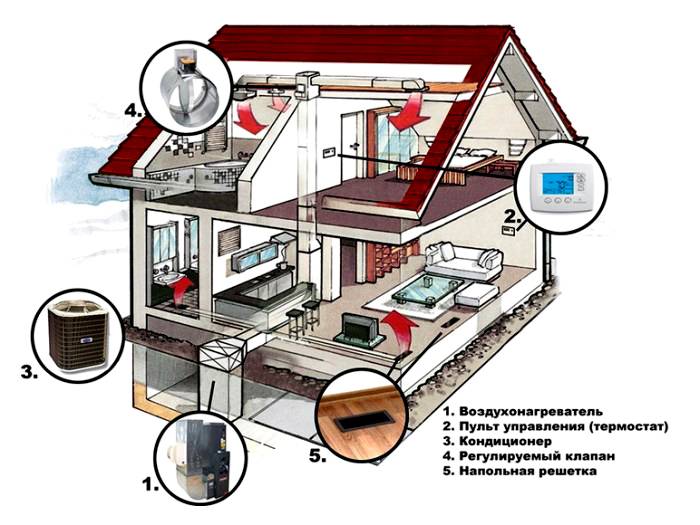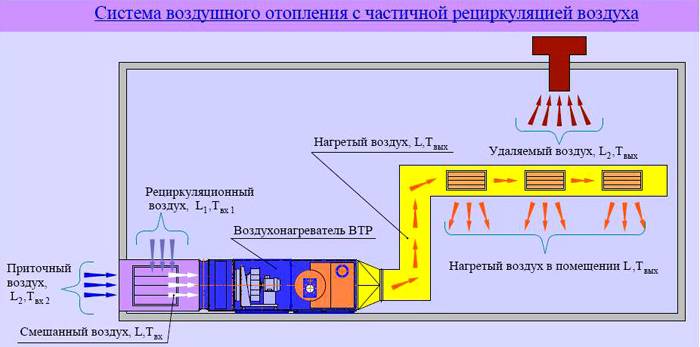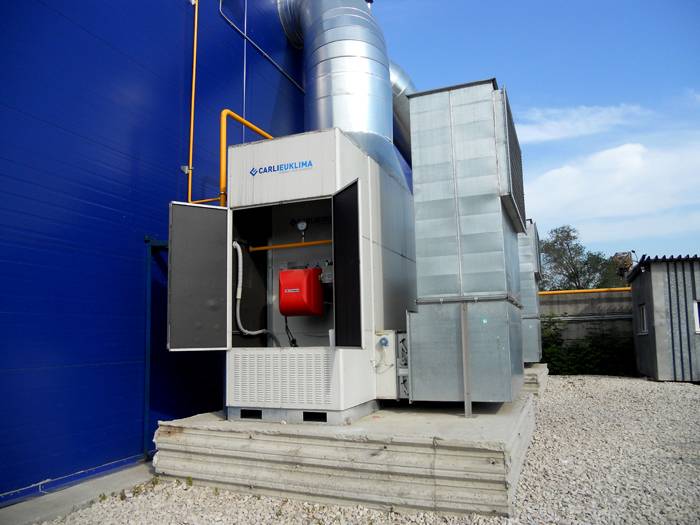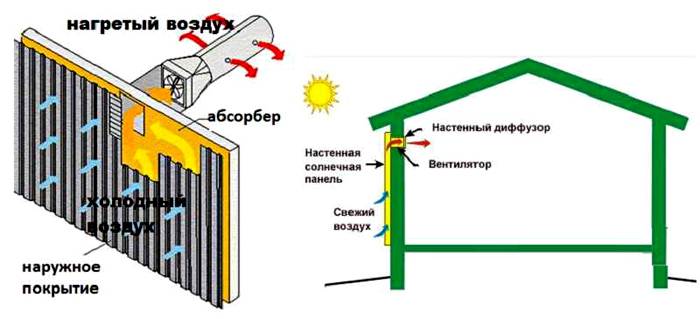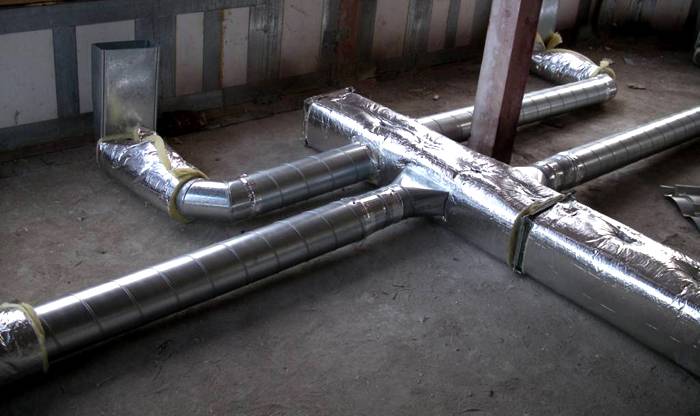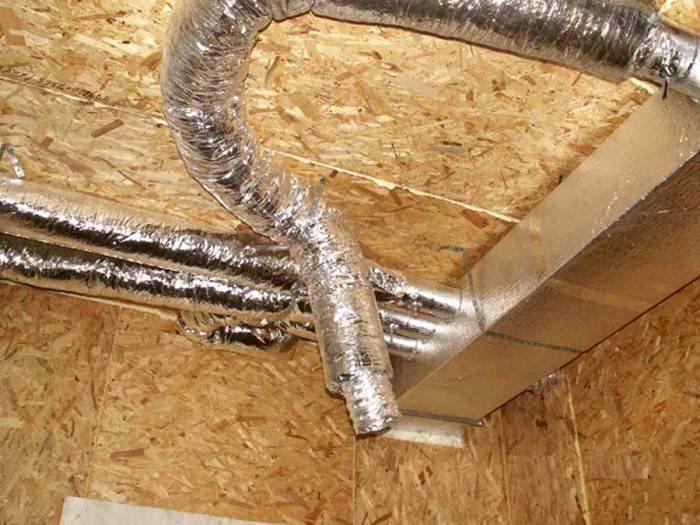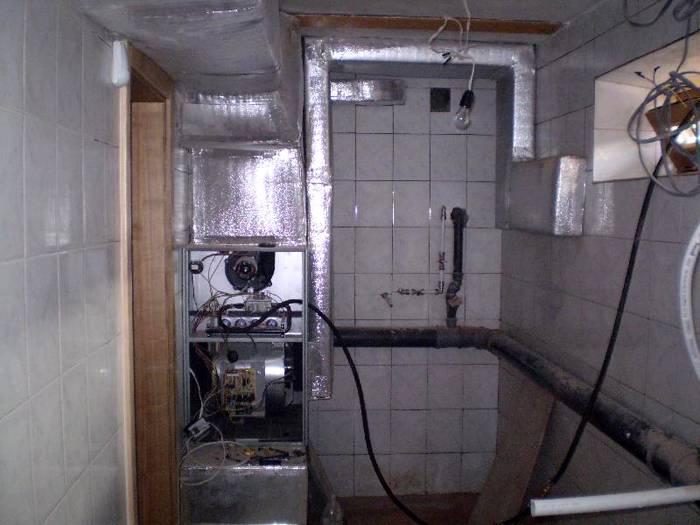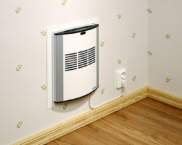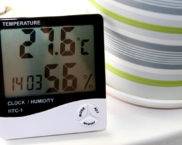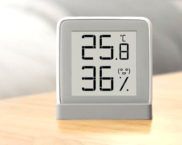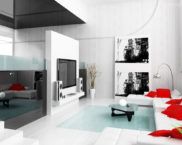How to make air heating of a private house with your own hands
Maintaining a comfortable temperature in the house, while spending the minimum amount of money, is the dream of absolutely any homeowner. Within the framework of this article, we will consider how to perform air heating of a private house with our own hands, how such a system works and what are its advantages. Some of the nuances of self-assembly and operation of the air heating system will also be highlighted. Let's get started!
The content of the article
- 1 Heating device option in the house - air heating
- 2 DIY air heating of a private house: types of schemes
- 3 How is air heating calculated
- 4 Calculator for calculating the required thermal power of air heating
- 5 Help in choosing a heat generator and installation steps
- 6 Installation recommendations
- 7 Air heating (video)
Heating device option in the house - air heating
This type of system includes either a water heater or a heat generator. These devices are responsible for heating the air. In the room, warm air is distributed using a special fan, which directs it to the desired zones. The best way to organize air space heating is portable heat guns. They quickly and intensively heat the required areas. Currently, many have begun to use this method in country houses and in the country.
Pros and cons of air heating in the house
The advantages of this heating method include:
- The efficiency is up to 93%;
- no intermediate links during the transfer of warm air, such as radiators and pipes;
- heating and climate systems can be easily combined. Therefore, the temperature in the room is maintained exactly as specified by the users;
- a slight passivity of the system, with the help of which you can heat the required areas to a high temperature.
But, despite the many positive qualities of heating, there are also disadvantages.They must be remembered for those who want to make air heating of a private house with their own hands. These include:
- installation of the unit can only be carried out during the construction of the premises. It is imperative to develop and calculate all the parameters of the system before carrying out construction work;
- air heating must be constantly maintained;
- this system is not being improved;
- electricity consumption is quite large. To save money, it is best to purchase a backup power supply.
It's important to know! This type of heating is widely known and applicable in European countries, and since there is a rather cold climate, 80% of houses and cottages located outside the city are heated in this way.
Installation diagram and device
Below are the components of air heating of a private house with your own hands:
- Bake;
- Filter elements;
- A pipe that takes air from a room;
- Hood;
- A pipe that brings in fresh air;
- Supply of warm air to the room;
- A system that removes cooled air from the house;
- Chimney.
As a heat generator, a liquid or gas heater equipped with a programmable controller is perfect. After the house is fully warmed up, the automation immediately works and maintains the temperature according to the specified parameters.
Note! The heater should be switched on automatically maximum 4 times a day, provided that the thermal insulation is well done. This mode helps to save energy resources.
DIY air heating of a private house: types of schemes
In order for air-type heating to work as efficiently as possible in your case, everyone should know all the available types of organization schemes. Each type has fundamental differences and subtleties of installation.
System classification
Air heating based on the principle of air circulation is natural and forced. With natural circulation, air rises to the ceiling and moves through the duct to one or another part of the house that needs to be heated. Forced air circulation is performed by using powerful fans in the installation.
By the type of scale, heating is local and central. A local system is needed to create a comfortable temperature in a specific room. And the centralized air heating system for a private house provides heating and maintaining the temperature throughout the residential building.
According to the principle of heat exchange, the units are subdivided into supply, recirculation and partial recirculation. Supply air is used to use air from the street, which is supplied by a fan to the heater.
Partial recirculation uses both outdoor air and warm air from the premises of the house. With the recirculation principle, the air is constantly renewed, cooling down in the rooms and reheating in the air heater or recuperator.
According to the location of the system, there are suspended and floor ones. With the help of a floor installation, the air not only heats up quickly, but also enters all rooms through the air ducts, giving them heat. This system can also be supplemented with climate control. This means that in hot summer months the temperature can also be lowered. With this function, the room becomes quite comfortable.
If the choice of purchase stops at air heating at home according to the Canadian method, then this means that you will be able to set and control not only the air temperature, but also the humidity and the degree of purification.

The system, made according to the Canadian method, allows you to regulate almost all parameters of the microclimate
Related article:
Heating a house with electricity: the most economical way. If the gas main does not pass nearby, then it is recommended to heat the house with electricity. The most economical way can be found by analyzing all available options. Let's talk about this.
How is the calculation of air heating
In order to correctly calculate the heating and distribute all the equipment, you cannot do without the help of design engineers who have vast experience in this matter. In order to independently perform all the work on the calculation and selection of equipment, you must adhere to some rules:
- calculate the heat loss of the whole house and each room separately;
- select the type and power of the air heater, as well as the ventilation unit;
- calculate the required air exchange based on the requirements of SNiP;
- perform an aerodynamic calculation of the system to determine the air head loss in the duct and determine the diameter of the air duct.
Useful advice! For every 1m. sq. an average of 80-100 W of heat is needed. For a more accurate calculation, use the calculator below.
If even the slightest mistakes are made in the heating calculations, some unpleasant moments will arise: noise, draft or overheating, and then equipment breakdown. It is worth checking everything several times to avoid discomfort.
The most economical option for air heating of a country house is the use of solar panels. This method is gaining popularity due to the increasing availability. Here, the number of sunny days in a year matters, then the number of collectors is calculated that absorb the energy of the sun and, subsequently, process it into heat. Collectors are best placed on the roof and walls of the house, or on specially built structures for this purpose.
Calculator for calculating the required heat output for air heating
Help in choosing a heat generator and installation steps
Air ducts are usually ordered at special enterprises that produce such equipment. If you want to install air conditioning, then it is necessary to insulate the supply air ducts. Condensation does not appear during thermal insulation. In order to install the main duct, it is recommended to choose galvanized steel. It is pasted over with self-adhesive foil insulation with a thickness of about 5 mm.
In order to hide the air ducts, it is recommended to use the space between the ceiling, which is located behind the suspended ceiling. There are 2 types of air ducts: rigid and flexible. They are chosen for a specific type of air heater. Aluminum tape is used to connect multiple ducts.
Installation recommendations
The most important thing to consider when performing an installation is the order of actions. First of all, it is necessary to install an air heater with a heat exchange chamber. From it comes the wiring and fastening of the air heater. Thermal insulation of channels must be done without fail. Elbows are made through flexible hoses. The sleeves, in turn, are mounted in the wall.
Advice! It is necessary to use the advice of a specialist when choosing a good model of a heat generator for air heating of a private house, the price of which depends on its technical parameters. And it is better to put the devices in a room specially designated for this.
The heat source is the most important detail. In order to connect it, it is best to use the services of specialists. But if you want to do this work yourself, you should read and understand the instructions very carefully. It is recommended to install the structure in a separate room. A basement is perfect. Chimney is desirable with sandwich construction... The heat exchanger itself is connected to the air duct, and the fan is located under the combustion chamber.
Installation of air heating systems is a complex and responsible process, which is preceded by painstaking calculation and selection of equipment. With proper theoretical training, it is quite possible to do the work yourself. In all other cases, contact a specialist.
Air heating (video)






